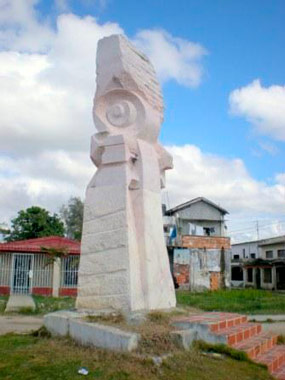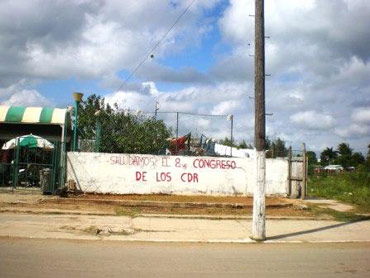My Return to Batabano, gateway to the Isla de la Juventud
Vicente Morin Aguado

HAVANA TIMES — In the many years I lived in today’s Isla de la Juventud (formerly Isla de Pinos), I travelled from Havana to the town of Nueva Gerona (passing through Batabano on the mainland) hundreds of times.
It had been some time since I’d last paid a visit to Batabano, where ferries bound for the second largest isle of the Cuban archipelago depart. There, I recalled a number of things from times past, now gone, but didn’t really see anything new around me.
In our student days, when we travelled on the ferries to the island or back to the mainland, the six-hour journey evoked many memories. A popular student ditty alluded to the loneliness of this town located in the southern coast of the province of La Habana. It went something like this: “Batabano, dark town, your road is as long as…” I don’t think it necessary to write the rather obscene lines that follow.

Another memory takes me way back, to the Dos Hermanos Hotel, a true gem of architecture, regrettably gone today. I recall it was a three-story wooden building. The interior was done in mahogany, cedar and majagua and boasted dazzling lattice windows and blue, polished counters that shone like mirrors. The rooms were always noisy because the State had been unable to renew the carpets and, whenever anyone walked, the floors creaked and bothered the guests downstairs.

I still carry with me the indelible memory of Juventino Rosas, the renowned Mexican composer and author of the Sobre las Olas waltz, who died in this remote corner of the planet in 1894, a mere fifteen days after getting off the train at the sea-side station, still pompously protected by an old cannon that refuses to disappear.
I have just taken a stroll around this small coastal town. It was once an obliged stop for merchants or passengers headed to the Isla de Pinos or bound for other places in Cuba’s southern coast. The railroad had reached it as early as 1843, perhaps well before than it did renowned cities in Europe and the Americas.
The main streets, which connect with the highways and are therefore quite long, are as dust-covered as they were in the previous century. Though some proud locals claim the train continues to arrive there on weekdays, I can assure you that no train breaths any life into the old terminal, shut down and derelict.

The old train terminal looks the same as it did in my youth, and perhaps as the illustrious Mexican composer saw it. I only came upon one sculpture evoking the famous artist. Though it was beautifully conceived, it was lackluster in the small and utterly neglected park next to the interminable iron rails, pointing to infinity.
I’ve heard that, years ago, the Sobre las Olas waltz was sang by the proud inhabitants of the town during certain celebrations, accompanied by an orchestra made up of volunteers. This tradition has been asleep for quite some time now, waiting for a much-needed wake up gong (that ought to resonate throughout the country).
Finally, while looking to take shelter from the sun, I had hoped to find the Dos Hermanos hotel. I could only manage to take the last picture I show you, my last memory of an ill-fated day in El Surgidero, Batabano.
—–
Vicente Morín Aguado: [email protected]






As a boy, I’m in my seventies, I spent time in Mayabeque where my uncle had a bohio; four walls and a sand floor. The beach, as I recall had very fine sand but the sea bottom was muddy.
Batabano is only about 15 km away. I’d heard of it but never went there. I’m curious about the Surgidero. Seems as if the south coast is muddy and shallow. Did any other ships dock in El Surgidero, back in the 50s and 60s? Was there regular train schedule?